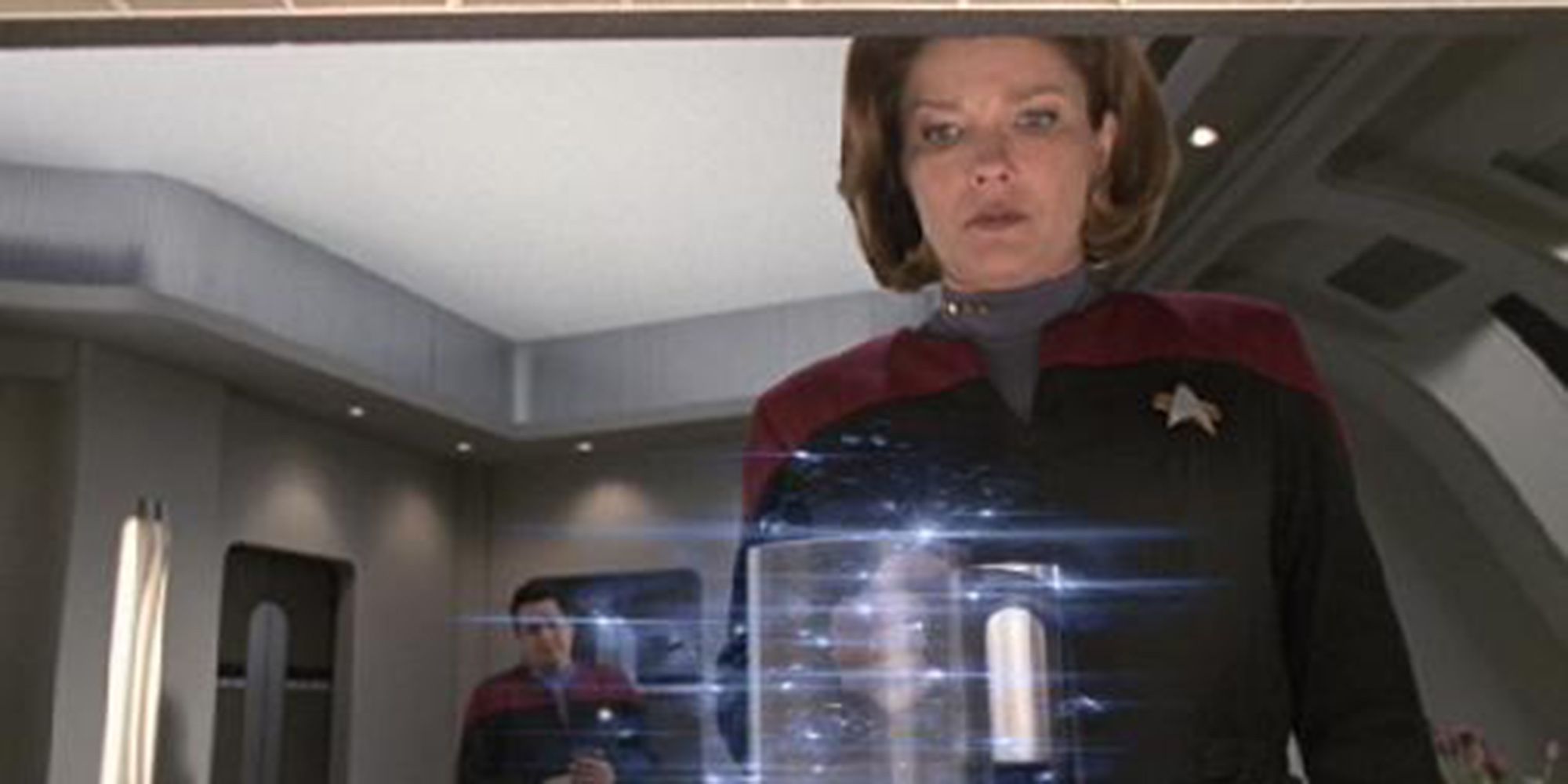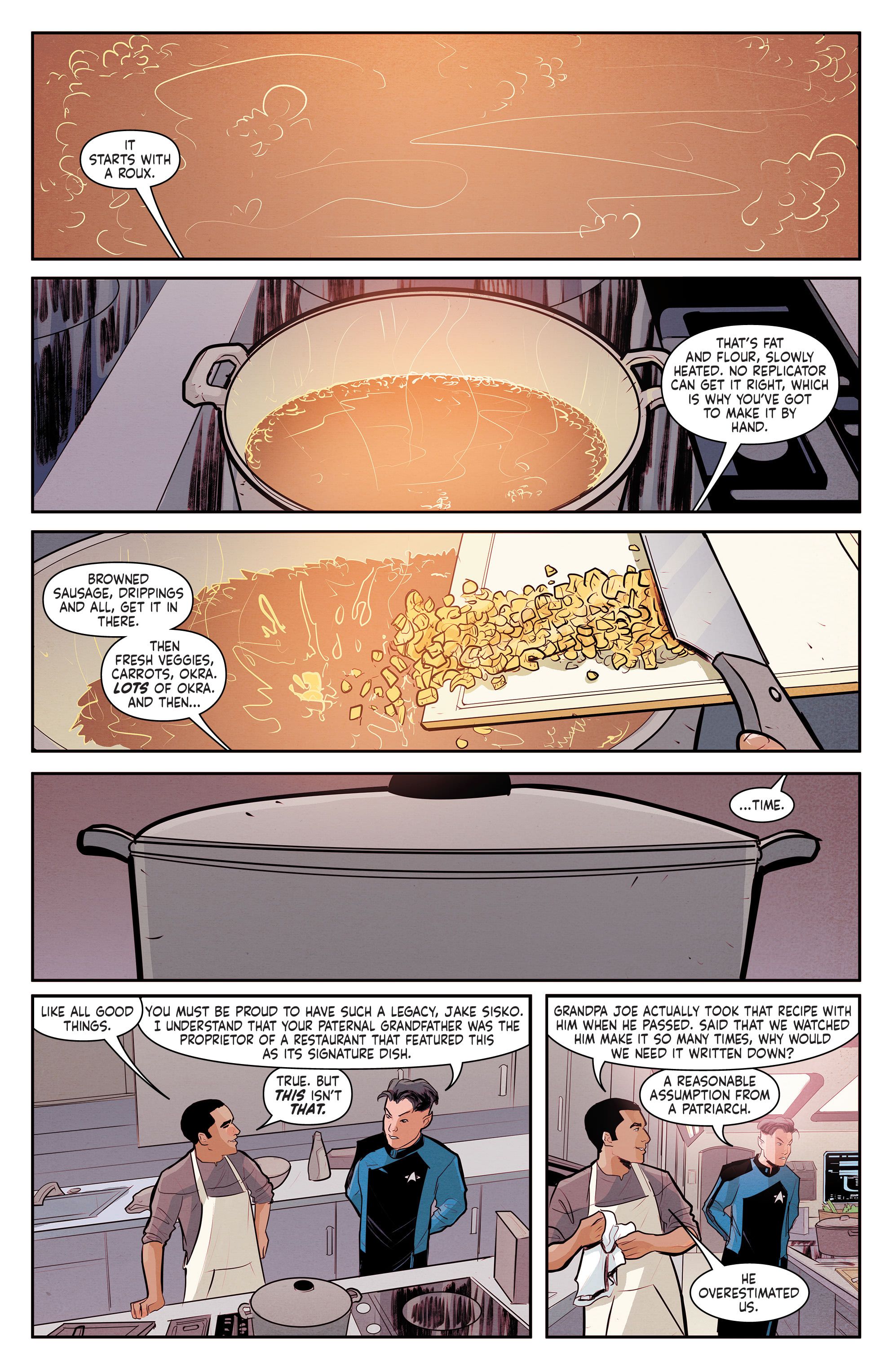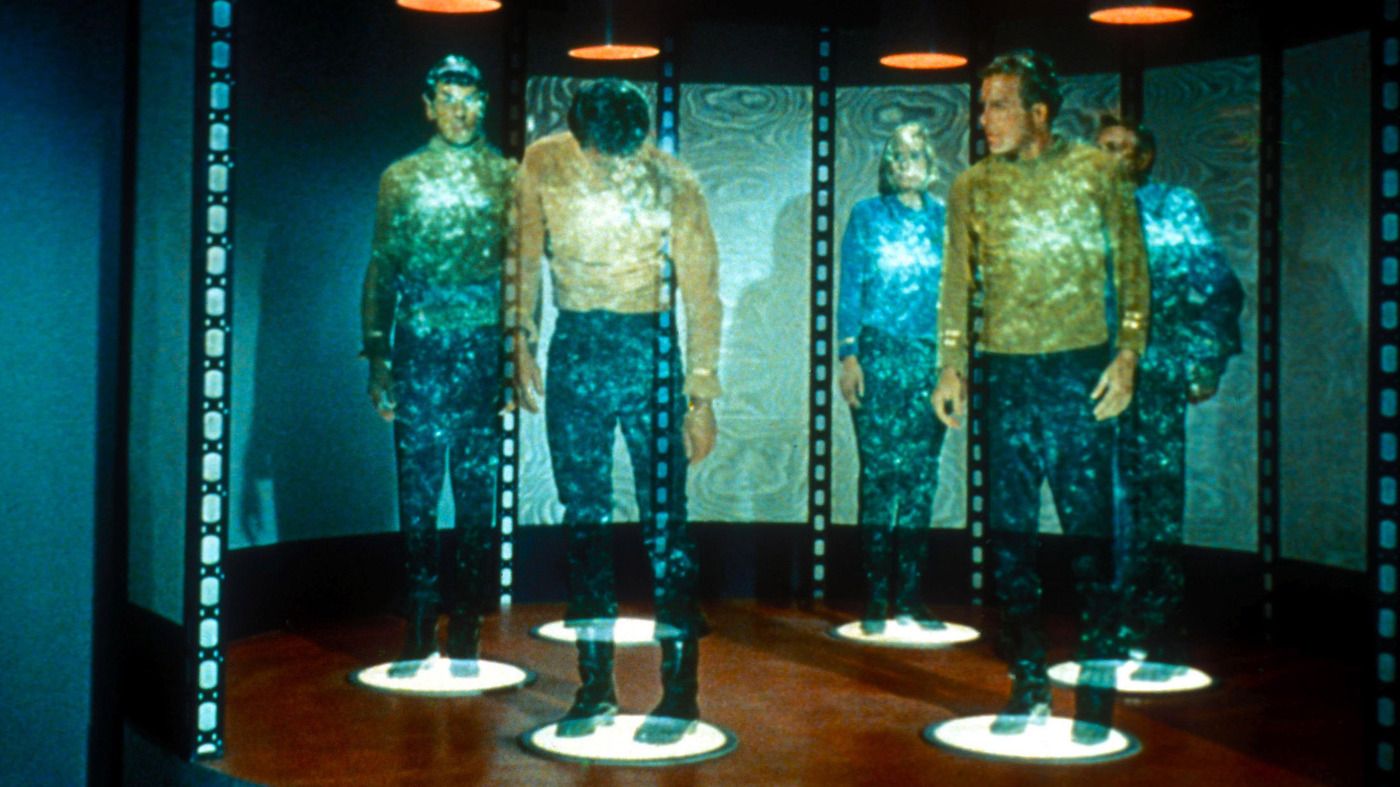The replicators are one of Star Trek's most dazzling innovations–but they do break down, which has some dark implications for the franchise as a whole. In Star Trek #3, Jake Sisko makes a seemingly innocuous comment about the Theseus’ replicators, and their inability to duplicate certain items. Jake’s comment, while made in passing, hits on a debate that has raged in the Star Trek community since the show’s inception 56 years ago.
The replicators, introduced in the first season of Star Trek: The Next Generation, are able to duplicate nearly anything–be it food, clothes or devices. The replicators work on a similar premise to the franchise’s iconic transporters, which break down matter at the subatomic level, converting it into an energy signal, called a transporter pattern. This signal is then sent elsewhere and once it reaches its destination, the signal is converted back into its original form–effectively transporting the person from point A to point B. The exact science of the transporter has never been explained, but the principles behind it are also used in the replicators. The ship’s computers store countless patterns, and are able to duplicate whatever item the user desires, although the replicator is limited to inanimate objects such as food and clothing.
The Science (and Ethics) of Matter to Energy Conversion is Dicey
And in Star Trek #3, written by Jackson Lanzing and Collin Kelly, illustrated by Ramon Rosanas and Joe Eisma, colored by Lee Loughridge and lettered by Clayton Cowles, the replicators aboard the USS Theseus are unable to duplicate gumbo using the secret Sisko family recipe. Thus, Jake makes the gumbo by hand, much to his new friend T’Lir’s astonishment.
Jake is not alone in his belief that the replicators cannot duplicate certain foods properly–his Deep Space Nine comrade Miles O’Brien felt the same way. The fact that these replicators cannot exactly recreate certain items also raises questions about the effectiveness of the transporter. When a person steps onto a transporter pad, they are converted to an energy pattern and reassembled elsewhere; this has led to debate in the Star Trek fan community over whether the person who stepped onto the pad is the same person who materializes on the planet. It is implied that the person who arrives at the planet is a copy of the original. This leads to another dark implication about the transporters: they effectively kill you when you step on one–which may explain Doctor McCoy’s hesitation to use transporters.
Does the Transporter Really Kill You?
Yet if the replicators, which run on the same technology as transporters, are unable to precisely duplicate certain patterns, does that mean that the transporters cannot likewise perfectly recreate the people that use it? For answers, fans need look no further than Scotty, chief engineer of the USS Theseus. Scotty is trapped in a transporter system, which has kept his pattern in a buffer on loop, for nearly 60 years. Is this the real Scotty? Or just the closest approximation the transporter could create? The debate around the science (and ethics) of Star Trek’s transporters and replicators has raged for years and likely will not stop anytime soon, but the fact that replicators can malfunction has dark ramifications for the franchise as a whole.
Star Trek #3 is on sale now from IDW Publishing.



